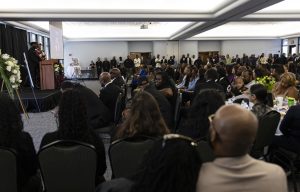Donation program helps faculty during medical absence
February 2, 2011
For Sacramento State employees who need extended time off due to illness or injury, the Catastrophic Leave Donation Program provides a way to get necessary time off and still get a paycheck.
According to the Sac State Monday Briefing, there are four employees approved for the Catastrophic Leave Donation Program. On average, three to four Sac State employees are approved for the program each week.
“It allows an employee, if they or their family member are out for a catastrophic illness or injury, that other employees on the campus can donate their (sick leave or vacation) time to them,” said Joanne Davis, disability leaves’ manager at the Office of Human Resources.
Kevin Ptak, art instructional support technician, was on catastrophic leave for the past three months due to a shoulder injury that required surgery and rehabilitation.
“My arm was immobilized for six weeks and I couldn’t really lift anything,” Ptak said.
Ptak said the Catastrophic Leave Donation program helped his family make ends meet and allowed him to get back on “the road to healing.”
“It was instrumental. We wouldn’t be able to make a mortgage payment without it,” Ptak said.
In order to be approved for the Catastrophic Leave Donation Program, an employee’s doctor must make the determination that an illness or injury is “catastrophic in nature.”
“That is exactly the language that we use,” Davis said. “We have a criteria list to give to the doctor … but if the doctor puts that language in there, then that’s what we go by, as far as getting someone approved for the program.”
An employee must also deplete his or her own bank of sick leave and vacation credits before receiving catastrophic leave hours from others.
For Ptak, that meant using 161 hours of his own vacation and sick leave to cover the first month of time off.
“Without the other two months covered by this program, it would have been financially really difficult to get through it,” Ptak said.
Ptak said he found out about the program through the faculty and staff bulletin that gets posted online each week, but it was not until he needed help that he inquired about the program.
After meeting with Davis and submitting the necessary documentation, Ptak received good news.
“I was approved and I was ecstatic. It’s really an excellent program for those that really need it,” Ptak said.
Employees who receive donated leave hours do not always know who donates hours to them. This information remains confidential unless the donor decides to share this information with the recipient.
In Ptak’s situation, Ptak knew who donated leave hours to him. Daniel Frye, chair of the Art Department, spread the word about Ptak’s need and several faculty members joined him in donating their leave hours to Ptak as a result. Frye could not be reached for comment.
“I am really thankful to all of them,” Ptak said.
As a response to what the Catastrophic Leave Donation Program did for him, Ptak said he will donate his leave hours to others in the future.
“I fully intend over the years on donating back all the time that I had used,” Ptak said. “Even if it’s 10 or 20 hours a year, I’m definitely going to give back to the people that need it. If there’s someone who comes along, specifically that I know, I’m for sure going to donate my hours to them as well.”
Ptak encourages others to donate their hours as well.
“It’s a fantastic thing for the people who need it,” Ptak said.
Ptak returned to work Monday. However, his full recovery is still under way.
“It’s a long process to go from initial to surgery, and they’re expecting me to be back to almost 100 percent or 80 percent within nine months after surgery so I’m still looking at mid-summer … before I’m back to relatively normal again,” Ptak said.
Like Ptak, employees can depend on catastrophic leave donations for up to three months and sometimes even six months if it is a critical situation.
“It helps that when they run out of their leave credits, then they’ve got other people on campus that can donate their leave credits to them so that that gives them more money when they are off work,” Davis said.
Davis encourages Sac State employees who need extended time off from work to apply for the Catastrophic Leave Donation Program.
“When you think about it, catastrophic leave is a right. It’s a benefit that is bargained by the union, and when you’ve got something in the union, then obviously that’s something that’s a benefit to you,” Davis said. “You have to remember, it can happen to any of us.”
Inna Gritsak can be reached at [email protected]
























































































































